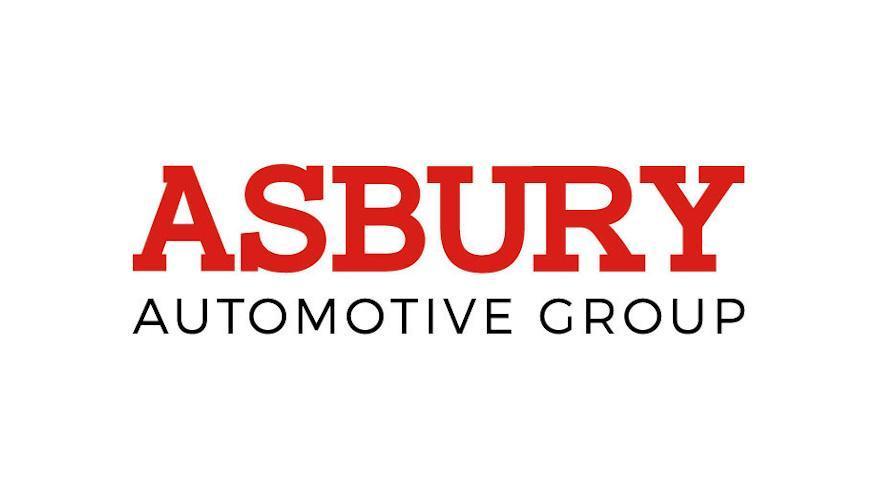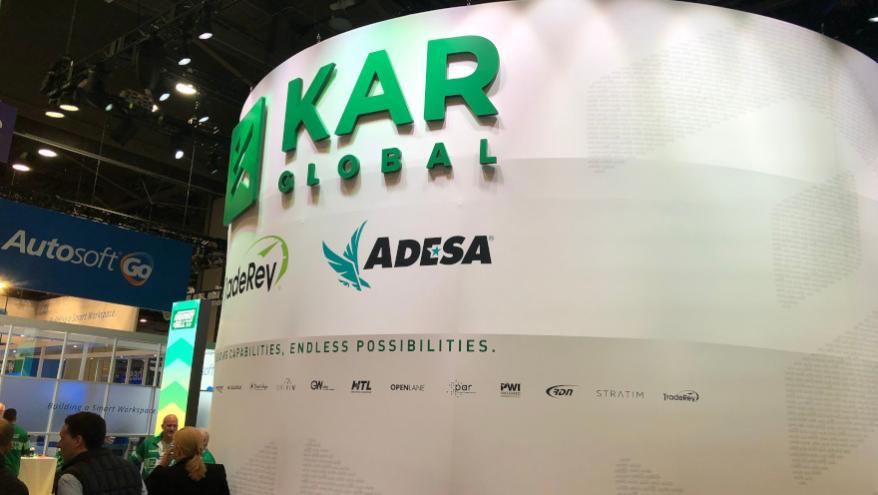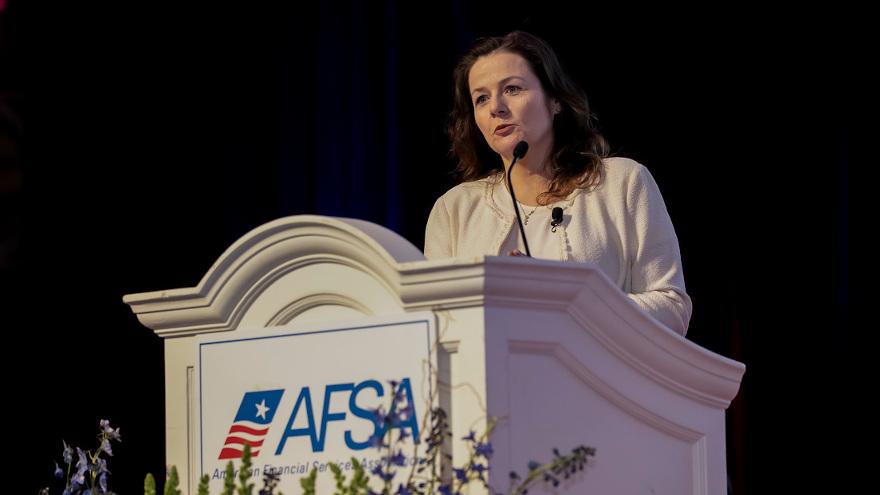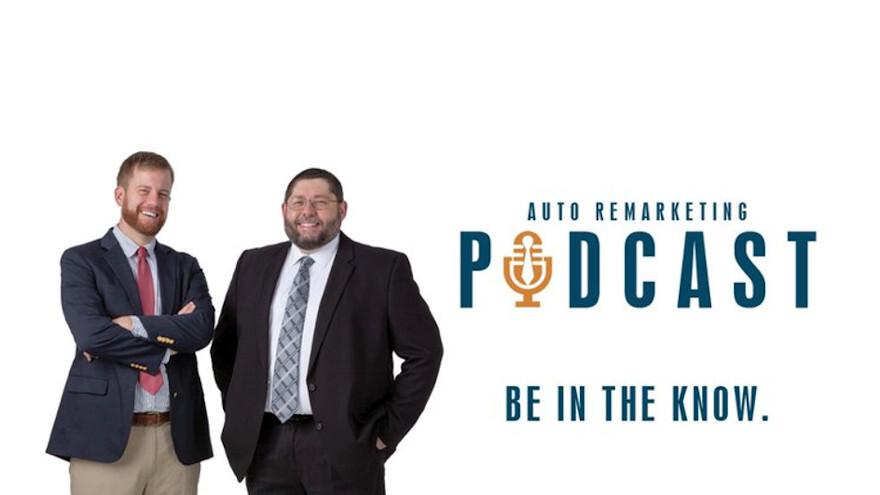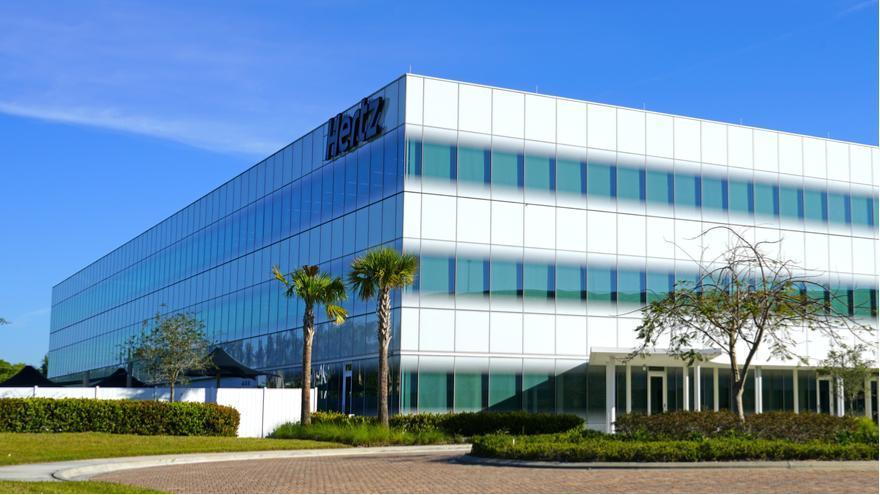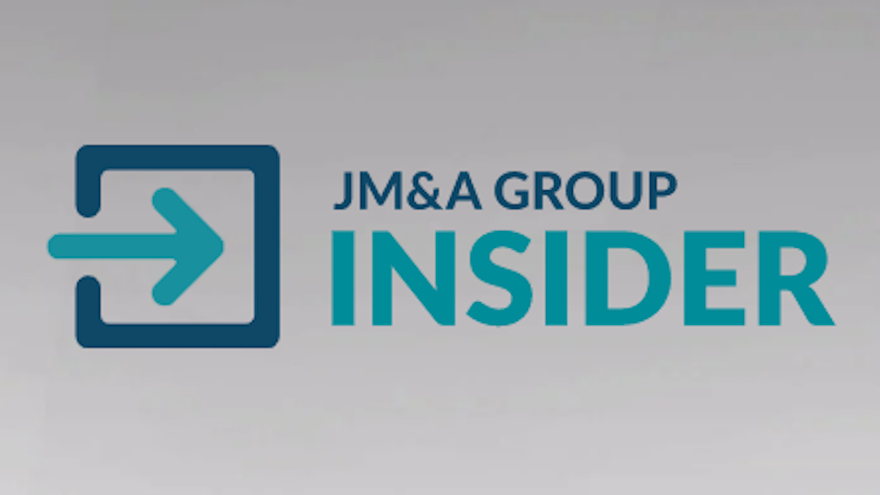Like it was for many retailers in the automotive space, it was a challenging second quarter and first half for Penske Automotive Group’s Used Vehicle SuperCenters due to the COVID-19 pandemic.
But some bright spots emerged for these stores toward the end of Q2, according to a rundown of quarterly results released by the retailer on Wednesday.
Penske said it had to suspend operations at essentially all of its 16 Used Vehicle SuperCenters in the U.S. and U.K. during April and May, amid shelter-in-place orders. This action led to a 61% dip in same-store sales in the U.S., with U.K. sales falling 100%.
“However, beginning in June, as many shelter-in-place rules began to be lifted, sales of used units rebounded and profitability more than doubled when compared to the same period last year,” the retailer said in a news release.
Penske’s SuperCenters moved 6,600 units during the quarter, a 62.9% year-over-year decline, with revenue at $132.6 million, a 57.5% drop.
The SuperCenters have sold 22,912 units year-to-date, a 36% year-over-year drop, with revenue at $438.1 million, a 30.1% slide.
Looking at overall used-car results, Penske retailed 42,606 used vehicles during the quarter, a 40.9% decrease. For the first half of the year, it had 105,656 used retail sales, a 27% decline.
Used retail revenue for the quarter was down 37.1% at $1.17 billion, with first-half used retail revenue at $2.79 billion, a 24.8% drop.
Used retail gross profits were down 45.1% at $55.8 million in Q2. Year-to-date, they are down 27.1% at $141.7 million.
Revenue per used vehicle retailed was up 6.5% at $27,368 in the quarter and it climbed 3.1% for the first half to $26,365.
Gross profit per used vehicle retailed fell 7.1% to $1,310 during the quarter, but it was steady with year-ago figures for the first half at $1,341.
Gross margins on used retail vehicles were down 70 basis points at 4.8% for the quarter, and it fell 20 basis points to 5.1% for the first half.
Sharing some overall commentary, company chairman Roger Penske said: “The operating environment in the second quarter was one of the most challenging in memory. Since the COVID-19 pandemic began impacting operations, our teams took action to protect the safety of employees and customers, control costs, manage vehicle inventory, maximize gross profit and preserve liquidity.
“Through these actions, our business experienced sequential improvement from month to month in units retailed, service/parts gross profit and overall profitability,” he said. “Starting in late March, we furloughed approximately 15,000 employees, or 57% of the workforce. At the end of June, approximately 14% of our employees remained on furlough. Additionally, we have reduced our workforce by approximately 8% as of June 30.”
It’s a good thing that dealerships and finance companies are known as a resilient bunch, because the COVID-19-clouded atmosphere they’re facing to retail vehicles and keep customers current on their contracts doesn’t appear to be improving quickly, no matter how much liquidity the Federal Reserve makes available.
And that atmosphere has Congressional squabbling fog in the mix, too, as lawmakers debate over what economic stimulus should be utilized next.
This week, officials from the Conference Board said their Consumer Confidence Index decreased in July after rising a month earlier, declining from 98.3 to 92.6.
The organization’s Present Situation Index — based on consumers’ assessment of current business and labor market conditions — improved from 86.7 to 94.2.
However, its Expectations Index — based on consumers’ short-term outlook for income, business and labor market conditions — decreased from 106.1 in June to 91.5 this month.
“Consumer confidence declined in July following a large gain in June,” said Lynn Franco, senior director of economic indicators at the Conference Board. “The Present Situation Index improved, but the Expectations Index retreated. Large declines were experienced in Michigan, Florida, Texas and California, no doubt a result of the resurgence of COVID-19.
“Looking ahead, consumers have grown less optimistic about the short-term outlook for the economy and labor market and remain subdued about their financial prospects. Such uncertainty about the short-term future does not bode well for the recovery, nor for consumer spending,” Franco continued in a news release.
Meanwhile, the Federal Open Market Committee (FOMC) at the Federal Reserve released its regularly scheduled policy update on Wednesday. All nine FOMC members voted unanimously to maintain the target range for the federal funds rate at 0 to 0.25%.
Committee members explained that they expect to maintain this target range until they are confident that the economy has weathered recent events and is on track to achieve its maximum employment and price stability goals.
That juncture might be a bit down the road — pun intended.
“The coronavirus outbreak is causing tremendous human and economic hardship across the United States and around the world,” the Fed said in a statement. “Following sharp declines, economic activity and employment have picked up somewhat in recent months but remain well below their levels at the beginning of the year. Weaker demand and significantly lower oil prices are holding down consumer price inflation.
“Overall financial conditions have improved in recent months, in part reflecting policy measures to support the economy and the flow of credit to U.S. households and businesses,” the Fed continued.
“The path of the economy will depend significantly on the course of the virus. The ongoing public health crisis will weigh heavily on economic activity, employment, and inflation in the near term, and poses considerable risks to the economic outlook over the medium term,” policymakers went on to say.
Turning back to information from the Conference Board, its latest consumer survey conducted by Nielsen that concluded on July 17 found that consumers’ assessment of present-day conditions did, in fact, improve in July.
Officials found the percentage of consumers claiming business conditions are “good” was relatively unchanged at 17.3%, while those claiming business conditions are “bad” decreased from 42.5% to 39.1%.
The Conference Board also noted consumers’ appraisal of the job market was more favorable. The percentage of consumers saying jobs are “plentiful” increased from 20.5% to 21.3%, while those claiming jobs are “hard to get” decreased from 23.3% to 20.0%.
Consumers, however, are less optimistic about the short-term outlook, according to that same survey.
The percentage of consumers expecting business conditions will improve over the next six months declined from 42.4% to 31.6%, while those expecting business conditions will worsen increased from 15.2% to 19.3%.
The Conference Board went on to note that consumers’ outlook for the labor market was also less favorable.
The proportion expecting more jobs in the months ahead declined from 38.4% to 30.6%, while those anticipating fewer jobs in the months ahead increased from 14.4% to 20.3%.
Regarding their short-term income prospects, officials said the percentage of consumers expecting an increase was relatively unchanged at 15.1%, while the proportion expecting a decrease rose from 14.1% to 15.0%.
All of this consumer survey information as well as the latest Federal Reserve action arrived as Congress wrestles with what aid and stimulus to give next in an effort to keep the economy in recovery mode.
Among the major contention points is the additional $600 weekly unemployment insurance benefits some of the more than 30 million out-of-work individuals have been receiving for more than three months. The amount is on top of what each state provides.
But those more robust unemployment benefits came through legislation set to expire this month.
Senate Majority Leader Mitch McConnell said on the chamber floor earlier this week: “The Congressional Budget Office says that five out of six recipients of this aid — 83% — receive more to stay home than they made on the job. That’s not fair and it’s not workable in a re-opening job market.
“We’ve already heard from small-business owners who have had trouble re-opening because it would be financially irrational for their employees to come back,” McConnell continued. “This is why Republicans propose to continue providing federal aid, continue providing hundreds of dollars per week, but do it in a more targeted way, while providing even more incentives for re-hiring.”
Speaker of the House Nancy Pelosi retorted this week in a news release saying that a Senate proposal McConnell referenced “destroys families’ financial security” and “endangers our children and enriches corporations at the expense of working families.”
Pelosi then added, “The attitude from Republicans has been one of condescension and disrespect for America’s working families. We are always optimistic that we can find common ground. However, Leader McConnell presented a liability-on-steroids proposal.”
Perhaps Curt Long summarized the developments of the week the best when it comes to dealerships and finance companies. Long is chief economist and vice president of research at the National Association of Federally-Insured Credit Unions (NAFCU).
“The early days of the pandemic saw the Fed act and speak forcefully to calm financial markets and restore confidence to investors, to great effect.” Long said in a statement. “But lately it is all too clear that while the Fed may have more ammunition to support markets, the problems in the real economy are mostly a matter for Congress.
“NAFCU continues to believe that a sustained recovery will prove elusive until a vaccine is available,” Long concluded.
Asbury Automotive Group set a used-car record during the second quarter: a fifth of its pre-owned sales were done online.
Announcing quarterly results Tuesday, Asbury had a couple other used-car strong points during Q2, including a 10% hike in average used-vehicle retail gross profit per unit and a 60 basis-point increase in gross margins on used retail.
Used-car retail revenue was down 15% year-over-year at $412.6 million. Asbury reported wholesale used-car revenue of $34.9 million, a 26% decrease. Total used revenue was $447.5 million, a 16% decline.
Total used-vehicle gross profits were up 3% at $37.1 million for the quarter. However, retail used gross profits were down 9% at $31.6 million. On the wholesale side, gross profits climbed from $1.2 million to $5.5 million.
Asbury retailed 18,400 used vehicles during the quarter, which was down 17% year-over-year.
The used-to-new ratio climbed from 84.2% to 91.7%.
Moving to average gross profit per unit, this came in at $1,717 for used retail, beating year-ago figures by 10%.
Used-vehicle retail gross margins climbed from 7.1% to 7.7%.
Moving over to year-to-date results, used retail revenue was down 9% at $858.6 million, wholesale revenue was down 17% at $82.1 million and total used revenue was off 10% at $940.7 million.
Used retail gross profits for the first half were at $62.8 million, down 8%. Wholesale gross profits were at $5.0 million, up from $2.1 million a year ago.
Total used gross profits were down 4% at $67.8 million.
Asbury retailed 38,687 used vehicles in the first half, down 11% year-over-year.
The used-to-new ratio climbed from 85.7% to 92.0%.
Average gross profit per unit on used retail sales was $1,623 for the first half, up 3% year-over-year.
Used retail gross margins climbed from 7.2% to 7.3%.
Offering some overall commentary, Asbury president and chief executive officer David Hult said in a news release: “We delivered a very strong quarter and proved out the resilience and the flexibility of our business model by delivering a record operating margin of 5.7% and a record low SG&A as a percentage of gross profit of 62.7% in an 11.3 million SAAR environment.
“Our focus on gross profit combined with our cost restructuring efforts allowed us to remain pro-active and committed to long term growth by moving forward with acquiring 12 Park Place luxury franchises in the Dallas Fort Worth Market under more favorable terms than the prior agreement,” he said. “This acquisition will add approximately $1.7 billion in expected annualized revenues and transform our total portfolio to 49% luxury stores. With the addition of Park Place, Asbury will be a stronger, more diversified company.
“Finally, I want to thank our teammates across our store network for their unwavering commitment and emphasis on safety during this pandemic; our performance is a direct result of their hard work and service.”
With so much of the automotive industry dependent upon technology nowadays, KAR Global is looking to make sure its wholesale segments critical for dealer productivity and success function well.
Stemming from recent enhancements to ADESA.com both ADESA.ca, the company said on Tuesday that customers now have access to fresh inventory and dealer trade-ins instantly via TradeRev. KAR Global explained this new single sign-on technology can offer customers seamless continuity between the two digital channels.
“The power of both ADESA and TradeRev digital marketplaces are seamlessly combined through this integration, enabling buyers to find, manage and source from even more inventory — faster, easier and more confidently than ever,” said Rick Griskie, KAR’s president of digital marketplaces.
“With a single login, buyers now have instant access to approximately 80% of North America’s off-lease inventory and high quality, retail-ready trade-ins — including roughly 60,000 vehicles per day via ADESA’s digital platforms — and real-time, live bidding from TradeRev,” Griskie continued in a news release.
Features on the modernized ADESA.com and ADESA.ca include a dedicated tile enabling all users to connect to TradeRev instantaneously. Through KAR’s single sign-on technology, existing TradeRev buyers can bid and buy instantly without an additional login step, while dealers without a TradeRev login can view inventory with one-click of a button and complete registration online to transact on the platform.
“ADESA and TradeRev’s platform integration is unsurpassed in the industry, both because of its technical sophistication and the seamless experience it offers to customers,” said Mark Endras, president and co-founder of TradeRev. “KAR’s focus is on the holistic integration of the entire enterprise, creating a more intuitive and simplified experience for dealers across all our auction channels and technology solutions.”
KAR noted that it is in the process of rolling out the modernized ADESA.com and ADESA.ca interface to all users, enabling the seamless transition to TradeRev’s platform and instant access to inventory.
The company added that customers can learn more about the integration by contacting their local auction or sales representative.
Dealers also can learn more than about ADESA through this website and about TradeRev via this webpage.
Experian senior director of automotive financial solutions Melinda Zabritski returned for another episode of the Auto Remarketing Podcast.
This time, Zabritski discussed how the moves made by captive finance companies to generate activity during the coronavirus pandemic impacted other segments such as leasing as well as used vehicles.
To listen to this episode, click on the link available below, or visit the Auto Remarketing Podcast page.
Download and subscribe to the Auto Remarketing Podcast on iTunes or on Google Play.
It's another "Joe Show" on the Auto Remarketing Podcast.
In this episode, Joe Kacala, chief product officer at automotiveMastermind, chats with Auto Remarketing senior editor Joe Overby about the latest used-car product launches at the company and why data mining is important in finding ideal ready-to-buy customers and potential used cars to fill up inventory.
More information on the used-car resources at automotiveMastermind can be found here.
To listen to this episode, click on the link available below, or visit the Auto Remarketing Podcast page.
Download and subscribe to the Auto Remarketing Podcast on iTunes or on Google Play.
Fitch Ratings dissected Hertz’s interim settlement and agreement with investors that the rental-car company finalized in recent days; a six-month strategy to de-fleet and realign its business while paying down note liabilities in connection with its asset-back securities.
The analysis also gave an inkling as to how many Hertz vehicles might be flowing through the wholesale industry during the remainder of the year.
Analysts indicated the key elements of the forbearance settlement agreement with ABS investors that extends through Jan. 21 include:
—Motion to reject the Hertz Vehicle Financing II master lease suspended until Jan. 15
—Hertz realigns its fleet size to a 310,000 unit target through de-fleeting
—Hertz agrees to pay true-up amounts if disposition proceeds do not meet targets
—Monthly depreciation on each non-program vehicle (risk vehicles) will be set at 2.0%
—Interest payments on the ABS notes funded by draws on existing letters of credit
—Disposition proceeds remitted to Hertz Vehicle Financing collateral account weekly; Hertz may retain $900 per vehicle for those sold its own retail channel
—Hertz pays certain fees and expenses of advisors to the ABS noteholders and other agent fees
“While Fitch Ratings believes the agreement is a step in the right direction for ABS notes, the agency believes the company still faces notable execution risks due to ongoing coronavirus impact on the travel/rental car sectors and challenging operating environment, including volatility in used vehicle values and ongoing functioning of wholesale vehicle markets,” analysts said in news release sent to Auto Remarketing on Monday.
As Hertz has sold down its fleet, analysts explained recent May and June fleet metrics have improved above Fitch’s assumptions in its May review, which was used to derive the ABS expected loss. Fitch pointed out this includes lower depreciation and strong disposition proceeds as the wholesale vehicle market became operational again and used-vehicle prices jumped higher.
Fitch recapped that Hertz stopped paying the monthly lease payment to Hertz Vehicle Financing from March to June and filed Chapter 11 bankruptcy on May 22.
On June 11, Fitch Ratings recapped that Hertz filed a motion for an order to reject certain unexpired vehicle leases under the Hertz Vehicle Financing master lease, totaling around 144,000 vehicles.
According to Fitch Ratings, Hertz effectively attempted to de-fleet by breaking the Hertz Vehicle Financing master lease up into thousands of individual vehicle leases.
“Importantly, with this interim settlement, Hertz agreed to suspend such rejection motion with ABS investors until Jan. 15,” Fitch Ratings said. “However, after Jan. 15, all parties reserve all rights with respect to future litigation claims, and Hertz may yet again challenge the master lease, which then remains a risk to ABS notes.
As of May 31 — the date assumed that the settlement is based — Fitch Ratings pointed out that Hertz’s fleet size stood at 492,521 vehicles. Under this agreement, Fitch Ratings said Hertz can dispose of at least 182,521 units (154,903 non-program vehicles and 37,793 program vehicles) from June 1 to Dec. 31; what’s classified as the forbearance period.
Fitch Ratings noted that the monthly target vehicle-sales rate stated by the rental-car company is between 9,312 to 48,702 vehicles per month during the forbearance period. Hertz sold 21,000 to 31,000 non-program vehicles in May and June, according to the firm’s analysts, which pointed out that the rental car company disposed of about 11,250 vehicles per month before coronavirus pandemic arrived.
Hertz indicated this monthly disposition schedule over the forbearance period would accumulate an estimated $3.86 billion in sales proceeds through the rest of the year, according to Fitch Ratings, which added that those funds will be used to pay down the ABS notes.
Additionally, during this period, Fitch Ratings said that Hertz estimates a $282 million in gain on sale, additional cash proceeds of $416 million and the $650 million in lease payments will pay the $10.17 billion ABS note principal balance as of May 31 down to $4.96 billion by the end of the year.
Fitch will be monitoring conditions going forward along with the pace and depth of Hertz’s ongoing bankruptcy process and de-fleeting, market depreciation rates, vehicle disposition proceeds relative to the Hertz Vehicle Financing net-book valuations, and monthly mark-to-market tests,” analysts said.
The coronavirus pandemic is preventing numerous in-person business meetings and other gatherings. But JM&A Group is still trying to keep its dealers and other clients informed about company developments and other industry trends that might have been shared across boardroom tables or in small get-togethers.
In an effort to further engage automotive professionals and provide valuable content, the firm recently launched JM&A Insider — its own, on-demand collection of automotive resources. This website gives members access to JM&A Group's growing library of free, informative content.
JM&A Group said membership is free and required to register for virtual events.
The company explained JM&A Group Insiders will be invited to view and download information from industry experts at any time through the company’s new online platform. Content will include blog posts, playbooks on dealership growth and profitability and short video tutorials on a variety of topics, including F&I, fixed operations, training and sales and marketing.
“Our goal is to be a trusted resource and partner to the greater automotive community,” said Scott Gunnell, group vice president of business strategy and operational excellence.
“JM&A Insider will continue to grow and evolve as we collaborate with our vast network of industry leaders to add new, prescriptive content and adapt to the needs of our existing members,” Gunnell continued in a news release.
In addition, the company mentioned the complimentary platform will host JM&A Insider Live Office Hours events hosted by leaders from various company divisions, giving members the opportunity to engage with subject matter experts and receive personalized advice for their queries.
JM&A Group highlighted timely automotive industry topics will include Virtual F&I, dealership talent solutions, fixed operations, team development and more.
For more information and to register to become a JM&A Group Insider, visit https://info.jmagroup.com/jma-insider.
Jessica Stafford, who is vice president and general manager of Autotrader and Kelley Blue Book, returns to the Auto Remarketing Podcast to discuss a whitepaper detailing "Lead Quality and Why it Matters More Now than Ever."
In this episode, Stafford discusses lead quality, dealership employee efficiency, Autotrader's Dealer Home Services program and more.
To listen to this episode, click on the link available below, or visit the Auto Remarketing Podcast page.
Download and subscribe to the Auto Remarketing Podcast on iTunes or on Google Play.
Quite often in reporting the weekly ebb-and-flow of the retail used-car market, you can get some mixed results.
Such is the case this week.
The overall auto rebound “lost momentum” the week ending Saturday, Cox Automotive chief economist Jonathan Smoke said in his weekly video report released Tuesday. Still, used-car demand remains strong — certainly higher than new, according to a Data Point report the company released Wednesday.
“Our estimated retail sales using a same-store methodology shows us the recovery lost momentum last week,” Smoke said. “Sales for the seven days ending Saturday were down 5% year-over-year for used and down 26% for new.
“Both sales trends seem to be hitting a ceiling.”
Meantime, the supply of retail used vehicles is hitting the floor.
According to Cox Automotive’s Data Point report from Wednesday, dealers (franchised and independent combined) began this week with a total of 2.18 million unsold used retail vehicles on their lots. During the same week of 2019, they had 2.65 million unsold used retail units.
That means the days’ supply of retail used vehicles was at 31.6 this week, the Cox Automotive report indicated. Normally, it is at 45 days, which is where it was in July 2019 (45.2).
The latest reading is also less than half of retail used days’ supply in April (77.5 days).
“Limited supply in both new and used vehicles is the next hurdle on the path to recovery for automakers and dealers,” Cox Automotive senior economist Charlie Chesbrough said in the Data Point report.
In a Catch-22 for used, though, the report points out that the supply dearth on the new-car side has driven more customers to used.
And in another one, the affordability of used cars during a rough economy has also pushed consumers to pre-owned, the report said.
However, the Cox Automotive analysis of vAuto Available Inventory data indicates that the average listing price of a used vehicle last week ($19,948) climbed almost $500 from where it was last year ($19,496).
Going back to Smoke’s analysis, the report shows that both new- and used-vehicle form submissions on Dealer.com “outperform.” However, momentum stalled there last week.
Offering some overall commentary, Smoke said in the video update: “Inventory is becoming more of a problem in both the new and the used market. And we can’t ignore the downward drift in consumer sentiment that’s been happening across the country, as we’ve seen widespread increases in the COVID-19 cases.
“But we can celebrate that we still have markets that are enjoying year-over-year increases in vehicle sales. There were 61 markets last week that were in that situation, so the declines are not happening everywhere and we can hope that we at least maintain this level of strength as we get into the rest of the month.”
Some additional positive signs were found in the latest reporting from PureCars following the Fourth of July weekend.
According to PureCars data shared via email, dealer ad spending on used cars from June 15 to July 6 was up 69% from the previous month. Total ad spending climbed 71%, with new-car ads up 76% and fixed ops ads up 59%, the data shows.
PureCars also shared the top 10 used model sales patterns for June 15 through July 6 and found the leading performers compared to the prior month were as follows:
1. Ford F-150: +14%
2. Chevy Silverado 1500: +11%
3. Toyota Camry: +31%
4. Ford Escape: +35%
5. Ram 1500: +10%
6. Chevy Equinox: +31%
7. Nissan Altima: +40%
8. Toyota Corolla: 26%
9. Nissan Rogue: +30%
10. Jeep Grand Cherokee: +25%



